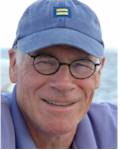Bible | Movies | Books | People | Hot Topics | Holidays | Humor | Gallery | Sanctuary | Sermons | Prayer | Quizzes | Communities | God | FAQ | Links
|
Sponsored Link |
The Families of Christianity: Catholics, Protestants, Orthodox and others; one faith, many families Christianity is a tremendously diverse movement that is often seen as being divided into several family groups. While it is difficult to describe or depict this diversity, the table below is a good a place to start.
Looking at it from another perspective, while the Roman Catholic Church is the largest single denomination, there are as many Christians in denominations that do not accept the primacy, or even the legitimacy of the Pope, as there are within the bounds of the Catholic Church. If the question were taken up by
a referendum among the entire Christian community around the world, God only knows
whether the institution of the Papacy would survive by popular vote of the world's
two billion Christians.
(source: Encyclopedia Britannica) Breaking these families down by "denomination," begins to uncover even greater diversity.
It is also interesting to see where these Christian families are located, and how the statistics on Christianity compare with those of the other world religions. For another article comparing Christianity with other religions in terms of membership statistics: Christians: Who are They, Where are They This article also includes maps showing where the major Christian groups are located. At a still greater level of detail, one need only look at facts on the ground in the United States, where the number of denominations continues to proliferate with some groups growing rapidly, while others are experiencing rapid decline. Bottom line: rather than making steady progress toward Christian unity, as some hoped would happen during the 20th Century, in the 21st Century the wider Christian family is more diverse, and perhaps more divided that ever. The Denominations of North America.
Please take a moment to let us know you
were here!
If you want to talk with someone in person, please feel free to call 917-439-2305
The Rev. Charles P. Henderson is a Presbyterian minister and is the author of God and Science (John Knox Press, 1986). Charles also tracks the boundry between the virtual and the real at his blog: Next World Design, focusing on the mediation of art, science and spirituality in the metaverse. For more information about Charles Henderson. |
Sponsored Link
|

